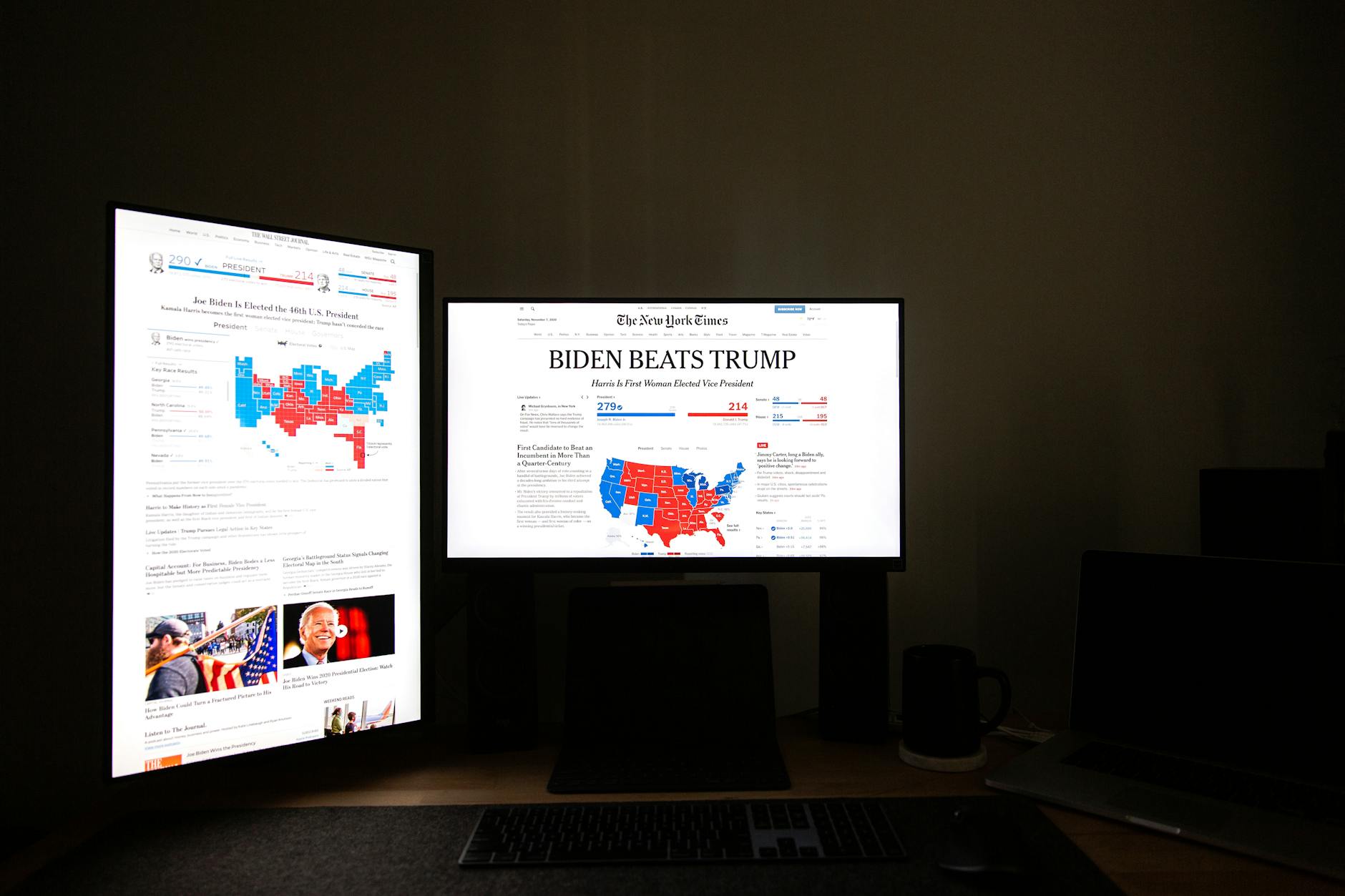Administration’s Family Policies Under Scrutiny Amidst Federal Employee Leave Changes
Examining the impact of recent policy shifts on federal workers and broader family support initiatives.
The current administration has frequently articulated a commitment to supporting families and encouraging child-rearing. However, recent policy actions, particularly concerning federal employees, have drawn criticism for potentially undermining these stated goals. A significant point of contention is the termination of union contracts for approximately 400,000 employees at the Department of Veterans’ Affairs (VA), which has altered parental leave benefits for many workers.
The executive order in question, initially issued in March, faced legal challenges aimed at preventing the broad cancellation of union contracts for federal workers. While lower courts initially blocked the order, federal appeals courts have since lifted these injunctions, allowing the administration to proceed with contract terminations as litigation continues. The VA was the first agency to implement widespread contract revocations, with an exemption noted for unions that reportedly supported the administration, such as VA police, firefighters, and security guards.
The direct consequence of these contract revocations at the VA includes the removal of previously approved maternity and paternity leave provisions. The summary indicates that some employees were reportedly informed of these changes even days before anticipated childbirth. Under the terminated union contracts, employees were entitled to an additional four weeks of unpaid parental leave, supplementing the legally mandated 12 weeks of paid leave. Critics argue that this change forces parents to return to work sooner, limiting their time to care for and bond with newborns.
Context and Background: Executive Orders and Federal Labor Relations
The executive order that led to the termination of numerous union contracts within the federal government is part of a broader effort to reform federal labor-management relations. The administration’s stated aim has been to increase efficiency and accountability within federal agencies. However, the method of achieving these aims, particularly through broad contract revocations, has ignited significant debate regarding the balance between executive authority and the rights of federal employees and their unions.
Federal employees, represented by various unions, have historically negotiated terms of employment, including benefits like parental leave, through collective bargaining agreements. These agreements are designed to provide a standardized and predictable set of benefits for employees across different departments and roles. The termination of these contracts means that such benefits are no longer guaranteed through collective bargaining and revert to agency-specific policies, which can be subject to change based on administrative discretion.
The specific exemption for certain groups of federal employees, such as police and security personnel, has also been a point of discussion. Critics suggest that this selective application of the executive order indicates a political consideration in its implementation, rather than a purely administrative reform. The legal battles surrounding these executive orders highlight the complex interplay between the President’s executive authority, the role of federal unions, and the judiciary’s oversight.
The source material points to a previous injunction that blocked the executive order, indicating that the administration’s ability to implement these changes was not immediate. The lifting of these injunctions by federal appeals courts has allowed the administration to move forward with its agenda, pending the outcome of further legal proceedings. This legal back-and-forth underscores the contentious nature of these policy shifts and their potential long-term implications for federal employee benefits and labor relations.
For further information on federal labor relations and executive orders, relevant resources can be found through:
- U.S. Office of Personnel Management (OPM): Provides guidance and information on federal personnel policies and programs.
- National Labor Relations Board (NLRB): Oversees labor relations in the private sector and provides context for broader labor law principles.
In-Depth Analysis: Parental Leave Policies and Family Support Claims
The crux of the criticism leveled against the administration’s actions at the VA centers on the reduction of parental leave benefits. Under the previous union contract, federal employees were entitled to specific periods of both paid and unpaid parental leave. The termination of these contracts has replaced this structured benefit with a more discretionary policy, where leave requests are subject to the “needs of the agency.”
A VA spokesperson, Pete Kasperowicz, was quoted as stating that the new policy is “much more equitable” because “all VA employees can request leave subject to the needs of the agency.” This assertion has been met with skepticism by critics who argue that moving from a guaranteed benefit to a discretionary one, subject to agency approval, is inherently less equitable. The argument is that the former policy provided a clear and consistent benefit to all employees covered by the contract, allowing for predictable planning for new parents. The latter policy, on the other hand, introduces uncertainty and potential inequality, as approval may vary based on supervisory decisions and agency demands.
The timing of these changes, particularly the reported notification to expectant parents days before delivery, is cited as evidence of a lack of consideration for the practical needs of families. The ability to take additional unpaid leave, even if unpaid, allowed parents more time to adjust to their new child’s needs and establish routines without the immediate pressure of returning to full-time employment. The loss of this additional leave is seen by critics as a step backward in supporting working parents.
Beyond the VA, the article points to other areas where the administration’s actions are framed as detrimental to families, particularly those with lower incomes. These include proposed or enacted cuts to programs providing essential services such as heating assistance, educational resources, and healthcare for low-income families. The withholding of $6 billion in funding for after-school and summer programs, which support childcare and English-language instruction, is presented as another example. While this funding was later released following pressure from Republican senators, its initial withholding is viewed as indicative of a broader pattern.
The role of Health and Human Services Secretary Robert F. Kennedy Jr. is also mentioned, with the article noting the cancellation of $11.4 billion in funding for immunization clinics and a reported plan to remove the Food and Drug Administration’s approval of the Pfizer COVID-19 vaccine for children under five. These actions, if accurate and fully implemented, could have significant implications for public health and child well-being.
The article also highlights the administration’s public pronouncements on family and reproduction, often referred to as “natalist” rhetoric, which emphasizes the importance of increasing birth rates. This includes proposals like awarding medals to mothers of six or more children. Critics contrast these pronouncements with the perceived actions that make life more difficult for families, suggesting a disconnect between rhetoric and policy. The support for initiatives like in vitro fertilization (IVF) has also been a subject of discussion, with a shift noted from a promise of mandated coverage to an acknowledgement that such mandates would require congressional legislation, a point the article frames as a convenient excuse given the administration’s perceived disregard for congressional authority in other matters.
The administration’s stated pro-family initiative, “Trump Accounts,” which provides a one-time payment of $1,000 per child, is also critiqued as insufficient given the substantial costs associated with raising a child. The article argues that the administration’s overall approach suggests a lack of genuine commitment to supporting children and families, instead opting for policies that increase hardship.
For official details on federal programs and policies:
- Department of Veterans Affairs (VA): Official website for the VA, providing information on services and policies.
- Department of Health and Human Services (HHS): Information on health and human services programs.
- Department of Education: Details on educational policies and civil rights enforcement in schools.
Pros and Cons
Analyzing the administration’s actions regarding family policies and federal employee benefits involves considering both stated intentions and observed outcomes. Here’s a breakdown of potential pros and cons:
Administration’s Actions: Parental Leave and Federal Employee Contracts at the VA
Potential Pros (as argued or implied by administration)
- Increased Agency Flexibility: By terminating union contracts and moving to agency-specific policies, the administration may argue that it gains greater flexibility to manage its workforce and allocate resources based on operational needs. This could theoretically lead to more efficient service delivery.
- Standardization (Disputed): The spokesperson’s claim of increased “equity” suggests an aim to create a more uniform policy across all employees, rather than one dictated by union agreements. However, the method of achieving this uniformity (discretionary rather than guaranteed) is the source of contention.
- Fiscal Prudence: Reductions in guaranteed paid or unpaid leave benefits could be framed as a cost-saving measure, allowing the agency to reallocate funds to other priorities.
- Emphasis on Merit and Agency Needs: A policy where leave is granted “subject to the needs of the agency” could be interpreted as prioritizing the operational requirements and mission of the VA, ensuring that critical services are not disrupted.
Potential Cons (as argued by critics)
- Reduced Parental Support: The elimination of additional unpaid parental leave can force parents back to work sooner, potentially impacting infant bonding, maternal recovery, and overall family well-being.
- Increased Uncertainty for Employees: Moving from a contractual guarantee to a policy based on agency discretion creates uncertainty for federal employees, making it harder for them to plan for significant life events like childbirth.
- Disregard for Union Rights: Critics argue that the broad termination of contracts undermines the role of unions in advocating for their members and may be seen as an attempt to weaken organized labor within the federal government.
- Inconsistency and Potential for Bias: A policy subject to agency discretion can lead to inconsistent application across different departments or even among supervisors within the same department, potentially introducing bias in leave approvals.
- Contradiction with Family Support Rhetoric: Critics argue that these policy changes contradict the administration’s public messaging about supporting families and encouraging childbirth.
Broader Administration Policies Affecting Families
Potential Pros (as argued or implied by administration)
- Focus on Economic Growth: Some policies, such as tax adjustments or deregulation, might be presented as beneficial for overall economic growth, which proponents argue indirectly supports families by creating jobs and opportunities.
- Targeted Direct Payments: Initiatives like the “Trump Accounts” (one-time payments) are direct financial injections intended to assist families, even if their long-term impact is debated.
- Support for Specific Family Structures: Rhetoric around encouraging larger families or supporting fertility treatments (like IVF) indicates a focus on specific demographic and reproductive goals.
Potential Cons (as argued by critics)
- Cuts to Social Programs: Reductions in funding or oversight for programs related to education, healthcare, childcare, and nutrition can disproportionately affect low-income families and children.
- Uncertainty in Funding: The withholding of funds for essential programs, even if later released, creates instability and operational challenges for organizations providing critical services to children and families.
- Limited Impact of Direct Payments: A one-time payment of $1,000 is often seen as insufficient to offset the high costs of raising a child, making it a symbolic gesture rather than a substantial support mechanism.
- Potential Public Health Setbacks: Actions related to immunization funding and vaccine approvals could have negative consequences for child health and community well-being.
It is important to note that the “pros” listed here are often based on the administration’s stated intentions or potential interpretations of their policies. Critics often contest the efficacy and intended outcomes of these policies, focusing instead on the negative impacts observed or anticipated.
Key Takeaways
- The Trump administration has terminated union contracts for a significant number of federal employees at the Department of Veterans’ Affairs (VA).
- This action has led to the revocation of previously approved maternity and paternity leave benefits, including additional unpaid leave beyond the legally mandated period.
- The new policy at the VA requires parental leave requests to be subject to agency needs, replacing the contractual guarantees previously in place.
- Critics argue that these changes contradict the administration’s stated commitment to supporting families and make life harder for federal employees.
- The article also cites other policy actions, such as cuts to social programs and funding for child-related services, as evidence of a broader pattern of policies detrimental to families.
- Specific mentions include reductions in funding for after-school programs, changes at the Department of Education concerning civil rights investigations, and actions by the Department of Health and Human Services impacting immunization clinics and vaccine approvals.
- The administration’s focus on “natalist” rhetoric and initiatives like “Trump Accounts” ($1,000 per child) is contrasted with these policy impacts, with critics deeming the latter insufficient.
- Legal challenges to the executive orders enabling these contract terminations are ongoing, with federal appeals courts having lifted initial injunctions.
Future Outlook
The future of these policies remains tied to ongoing legal battles and potential shifts in administration priorities. The legal challenges to the executive order that facilitated the termination of federal employee union contracts will likely determine the long-term legality and enforceability of such actions. Should the courts uphold the administration’s authority, the trend of contract revocations and the implementation of agency-specific benefit policies could continue across other federal agencies.
Conversely, if the courts rule against the administration, it could lead to the reinstatement of previously negotiated benefits or necessitate a different approach to federal labor relations reform. This uncertainty creates a challenging environment for federal employees who rely on these benefits for significant life events.
Furthermore, the broader landscape of family support policies is subject to political discourse and budget allocations. Future administrations or congressional actions could either reinforce or reverse the current trends. For instance, congressional pressure has already played a role in the release of previously withheld funding for child programs, indicating that legislative intervention can act as a counterbalance to executive decisions.
The debate over the effectiveness of initiatives like “Trump Accounts” versus the impact of reduced social program funding is likely to persist. The long-term effects of these policy choices on child development, family economic stability, and societal well-being will be a critical area for future analysis and public debate.
For those interested in the evolution of federal employment law and family policy, monitoring the following sources will be beneficial:
- Congress.gov: For legislative actions and proposed bills related to federal employment and family support.
- Supreme Court of the United States: To track potential appeals of lower court rulings on executive orders.
- Policy research institutes and think tanks that focus on labor, economics, and social policy.
Call to Action
In light of the significant policy shifts impacting federal employees and families, it is crucial for concerned citizens to engage with the democratic process. Understanding the details of these policies and their potential consequences is the first step towards informed action.
Federal employees affected by these changes are encouraged to:
- Stay informed about their rights and the ongoing legal proceedings through their respective unions and official government channels.
- Communicate with their congressional representatives to voice concerns and advocate for policies that support working families.
For the general public, consider:
- Contacting elected officials at all levels of government to express views on family support policies, federal labor relations, and the funding of essential social programs.
- Supporting organizations that advocate for family well-being, workers’ rights, and the preservation of social safety nets.
- Engaging in respectful dialogue with others to raise awareness about the complexities of these issues and encourage evidence-based policymaking.
Informed advocacy and participation are vital to ensuring that public policies reflect a genuine commitment to supporting all families.









